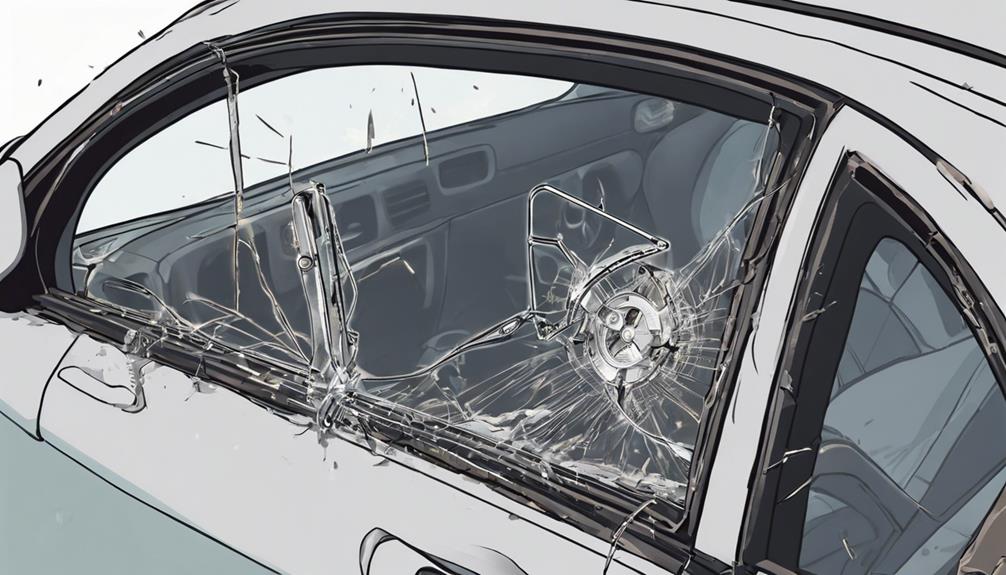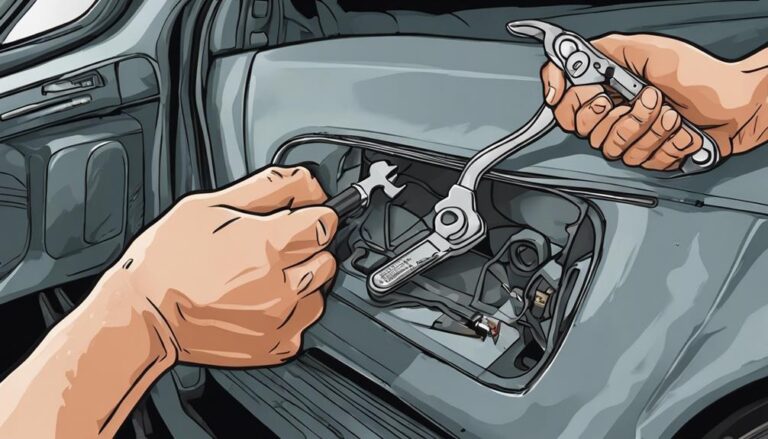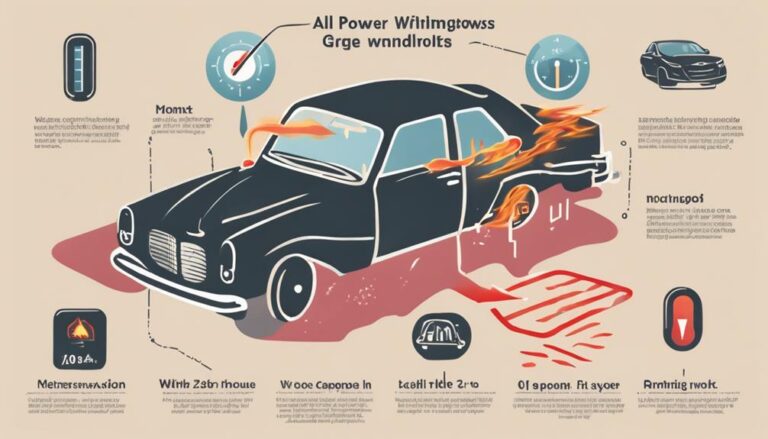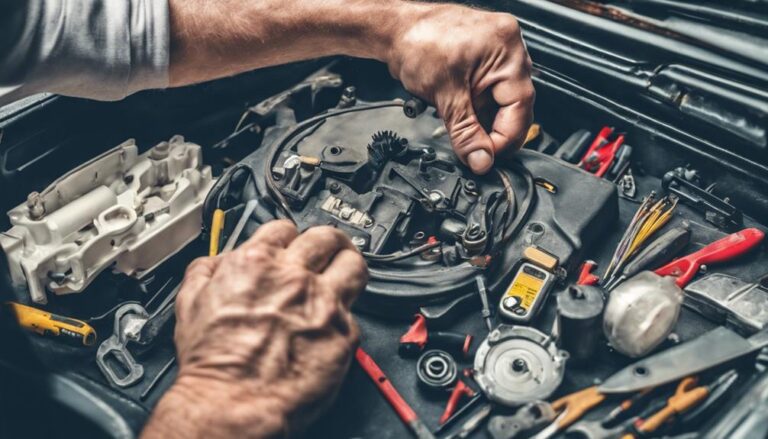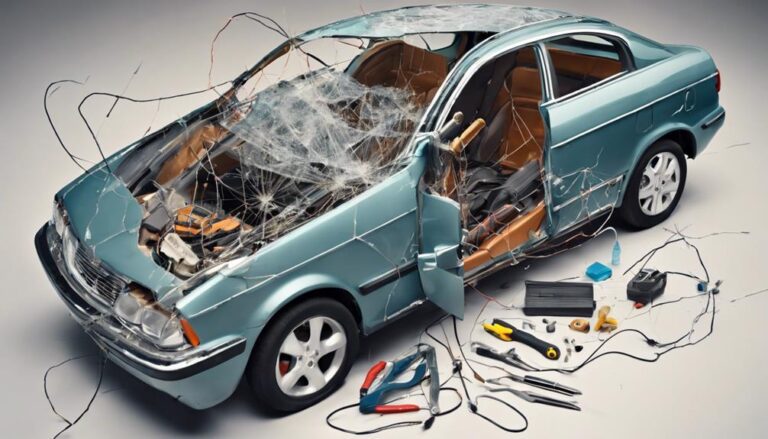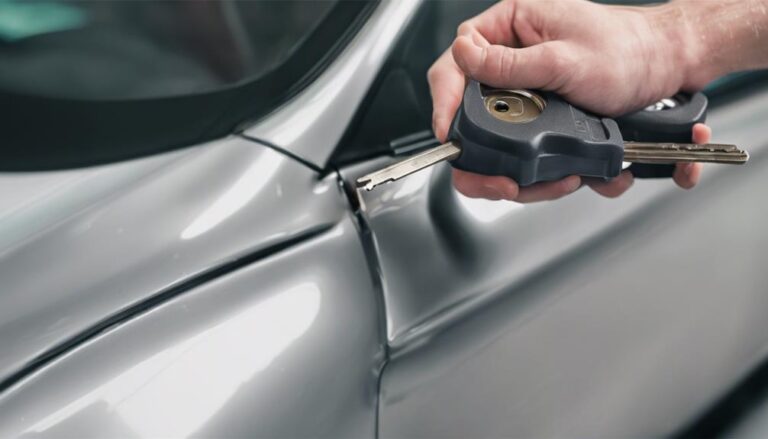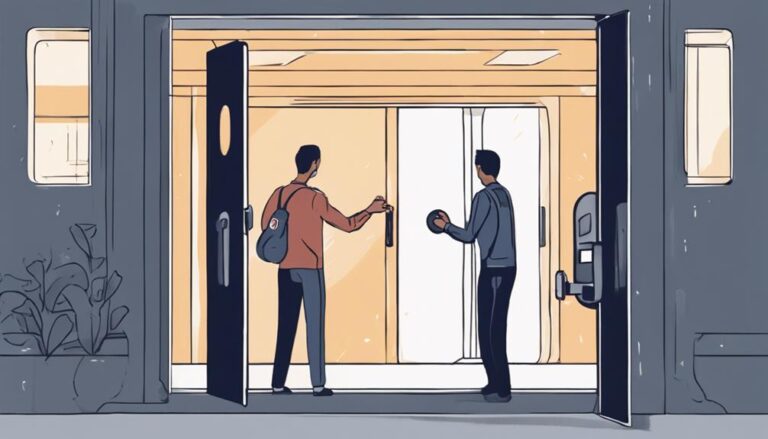Why Is My Power Window Regulator Not Working?
If your power window regulator is not working, it could be due to mechanical issues or electrical malfunctions.
The frustration of a malfunctioning window can be alleviated by understanding the root cause, whether it's a simple fix or a more complex problem.
By following a systematic approach to troubleshooting, you can pinpoint the exact issue and find a solution that gets your window back to smooth operation.
Key Takeaways
- Check power and ground, test switch, inspect regulator, and consider replacement for faulty power window regulator.
- Look for slow movement, unusual noises, loose windows, or sudden malfunctions to diagnose regulator issues.
- Common causes include worn cables, corrosion, overloading, faulty motors, and lack of maintenance affecting regulator performance.
- Seek professional help if the motor runs but the window doesn't move, or for complex electrical or manufacturer-specific problems.
Symptoms of Faulty Power Window Regulator
If you notice your power window moving slowly or getting stuck, it could be a sign of a faulty power window regulator. Symptoms like unusual noises such as grinding or clicking during window operation indicate potential issues with the window regulator.
Another red flag is if the window drops down on its own or feels loose when raised. Difficulty in operating the power window or if it moves unevenly are common signs of a malfunctioning power window regulator.
Additionally, a sudden inability to raise or lower the window smoothly can also point towards a mechanical issue with the window regulator. When facing these symptoms, it's essential to address them promptly to ensure the proper functioning of your power window.
Steps to Diagnose Power Window Regulator
To diagnose power window regulator issues effectively, start by checking for power and ground at the window motor. Confirm power and ground at the window motor to guarantee proper operation. Validate the switch and motor are receiving power by testing the fuse, wiring, and connections. Below is a table summarizing steps to diagnose power window regulator problems:
| Step | Description |
|---|---|
| Check Power and Ground | Confirm power and ground at the window motor to ensure proper operation. |
| Test Window Switch | Evaluate the switch for any faults that may impact the regulator's function. |
| Inspect Window Regulator | Look for physical damage like broken cables or worn-out components. |
| Verify Door Alignment | Ensure the regulator is aligned correctly within the door frame. |
| Consider Replacing Regulator | If all components are functional but the window doesn't move, consider a replacement. |
Common Causes of Power Window Regulator Failure
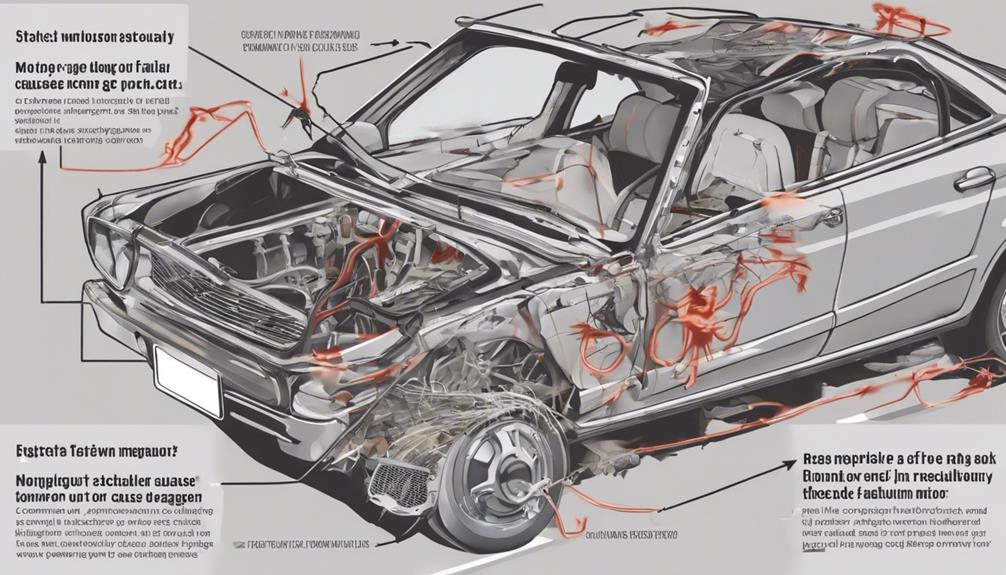
Common causes of power window regulator failure include worn or damaged window regulator cables leading to power window failure. Corrosion or rust on the regulator mechanism can also cause malfunctioning.
Overloading the power window with excessive force can result in regulator failure as well. Faulty power window motors can put strain on the regulator, causing it to stop working efficiently.
Regular maintenance of the power window system is essential to prevent regulator failure. In case of issues, check the fuse, switch in the door, Control Module, and listen for any sounds to determine if you can hear the motor working.
Being mindful of these common causes can help you identify and address power window regulator problems promptly, ensuring the smooth functioning of your vehicle's window regulators and door panels.
DIY Repair Tips for Power Window Regulator
Inspecting the power window regulator for any signs of damage is the first step in DIY repair. Start by using a multimeter to test the power window switch and check for a blown fuse.
To access the regulator, you'll need to remove the door panel carefully. Once inside the door, visually inspect the window regulator for any broken cables or worn-out components. If necessary, disconnect the regulator and replace it with a new one.
During installation, make sure the proper alignment of the regulator with the window glass and tracks to avoid future issues. Additionally, don't forget to lubricate the window regulator and tracks to promote smooth operation.
When to Seek Professional Help for Power Window Regulator
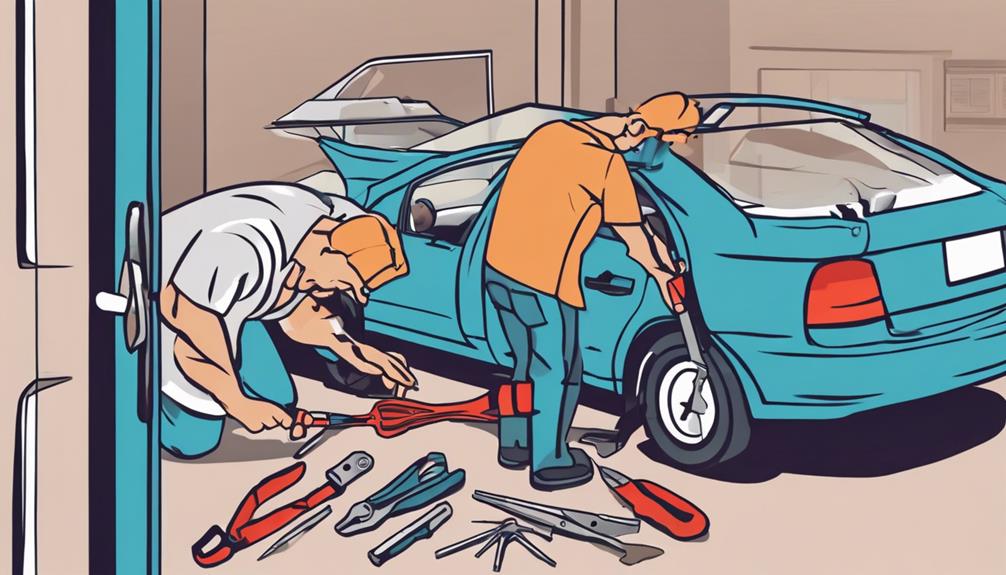
If you encounter power window regulator issues beyond your expertise or comfort level, seeking professional help is advisable.
When your power windows stop moving and the motor is still running, it could indicate a problem with the drivers door switch, window switches, or the regulator itself. Consulting your vehicle's owners manual may offer troubleshooting tips, but if you lack experience with electrical components and wiring, it's best to leave the diagnosis and repair to certified mechanics.
These professionals have the expertise to effectively troubleshoot and resolve complex power window regulator issues. Auto glass repair specialists are equipped with the necessary tools and knowledge to address malfunctions in the windows.
Dealerships can also assist with manufacturer-specific problems and may provide warranty coverage for repairs. Don't hesitate to seek professional assistance when dealing with power window regulator issues that are beyond your understanding to make sure the problem is resolved correctly and safely.
Frequently Asked Questions
What Could Be the Reason for a Power Window to Stop Functioning?
If your power window stops working, it could be due to various reasons like an electrical issue, faulty connection, window off track, motor failure, lack of lubrication, broken cable, or a fuse problem.
How Do You Tell if It's the Window Motor or Regulator?
To determine if it's the window motor or regulator, listen for motor noise without window movement, indicating motor issues, not regulator. Troubleshoot with testing methods to identify the problem accurately. Repair or replace based on findings.
Why Do Window Regulators Stop Working?
When your window regulator gives out, it can be due to power source problems, wear and tear, electrical issues, lack of maintenance, environmental factors, wiring problems, or faulty connections. Regular care helps guarantee smooth operation.
What Causes a Power Window Switch to Go Bad?
When a power window switch goes bad, it's often due to electrical connections weakening, moisture causing damage, overuse wearing it out, faulty wiring, corrosion building up, lack of lubrication, or power surges affecting its functionality.
Conclusion
If your power window regulator isn't working, it's important to diagnose the issue properly to determine the necessary repairs. Common causes include faulty switches, wiring issues, or motor failure.
By following the steps outlined in this article, you can troubleshoot and potentially fix the problem yourself. However, if you encounter complex electrical issues like a broken wire as seen in a recent case study, it may be best to seek professional assistance for a safe and effective repair.

